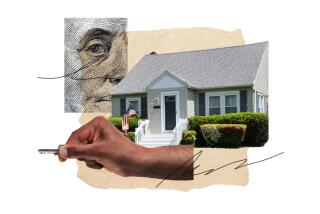Minority Homeownership Lags, Study Finds
- Share via
Despite an unprecedented boom that has allowed minority and moderate-income families to buy homes in Southern California in rising numbers, a new Harvard University study found that minority ownership still sharply lags that of whites, and that the amount of affordable housing for the poorest families--regardless of race--continues to shrink.
The annual report by the Joint Center for Housing Studies says that while improvement has been made in helping the least advantaged, much work remains to be done to meet society’s most basic need.
“What stood out about this report is how remarkable and sustained this housing boom is,” said Nicolas Retsinas, executive director of the center. “It’s as good as it gets in overall statistics.”
Nearly two-thirds of U.S. households own the homes they live in. Between 1994 and 1997, as the economy expanded and mortgage rates dipped and consumer confidence soared, 4 million people joined the ownership ranks, setting a three-year record.
Minority homeowners accounted for 42% of that total, up from 36% between 1985 and 1993, the study found. Similar gains were made in Southern California.
In 1996, for instance, minorities accounted for nearly half the home buyers in Los Angeles County, according to the California Assn. of Realtors.
But Retsinas said there are “substantial disparities” in homeownership between minorities and whites. Overall, minorities accounted for only 17% of the nation’s homeowners, and narrowing the gap requires “stronger measures than mortgage lenders, government and community groups have mustered so far,” the report said.
“If this is the best we can do, we still have a ways to go,” Retsinas said.
In April, a study by the Housing and Urban Development Department found there were 5.3 million low-income families in need of affordable housing, including 750,000 in California.
And earlier this month, the Center on Budget and Policy Priorities found that the nation’s widest gap in affordable housing is in the Southland, where there are four times more low-income renters than there are low-cost units for them to rent.
Homeownership in areas with relatively large minority populations grew 28%, the Harvard study found; in all-white neighborhoods, ownership grew 19%. The growth in minority and low-income loans was greatest in the suburbs, the study found.
Housing demand among low-income renters and homeowners far exceeds supply, a problem that suburbs increasingly are dealing with as well. Nearly one out of three extremely low-income renters, and half of extremely low-income homeowners, now live outside of major cities, the report said.
More to Read
Inside the business of entertainment
The Wide Shot brings you news, analysis and insights on everything from streaming wars to production — and what it all means for the future.
You may occasionally receive promotional content from the Los Angeles Times.










